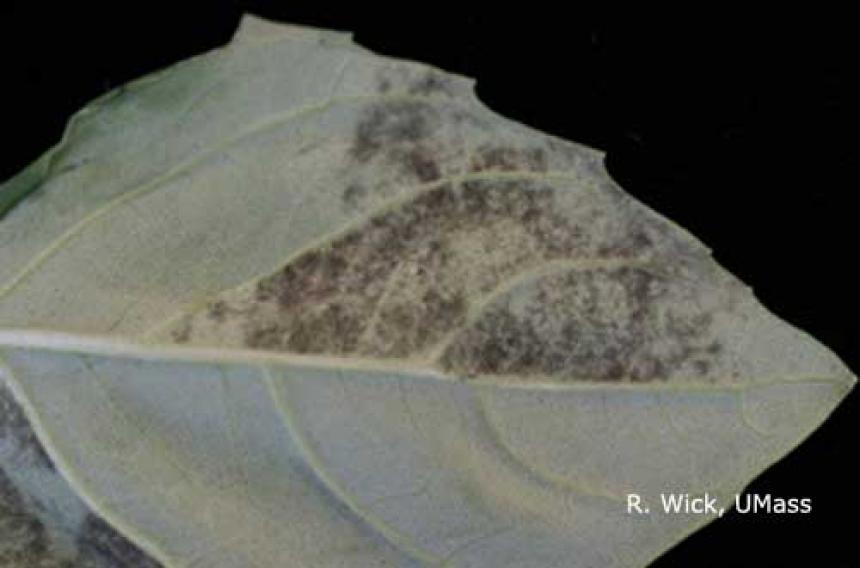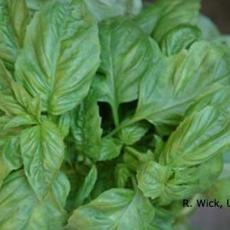Downy Mildew sporulation occurs on leaf undersides and can be mistaken for growth media on foliage.
Downy mildew (Peronospora species) of basil was first detected in the continental United States last year in Florida. In 2008, it appeared to be wide spread in Massachusetts, New York, and New Jersey. The disease is probably much more widespread than is realized. Symptoms occur on the top of the foliage as yellowing as if the plants are nitrogen or nutrient deficient. The underside of the leaves appear "dirty" due to the growth of sporangia, the distributive form of the fungus. Downy mildew is a relative of Phytophthora and Pythium.
Symptoms appear as a light gray colored, fluffy growth on the underside of leaves. The discolored foliage on the upper leaf surface could be confused with a nutritional deficiency. Downy mildew symptoms appear very rapidly and tend to be much more difficult to control than powdery mildew. Conditions that promote leaf wetness, such as high relative humidity, overhead irrigation and close spacing, favor this disease. With a hand lens, closely examine the bloom of sporangia (microscopic stalks bearing spores) on the underside of the oldest leaves. (They will look like many tiny branched trees, each bearing tiny lemons). This can help you distinguish downy mildew from powdery mildew. Downy mildew sporulation also tends to occur on the underside of the leaves, whereas powdery mildew can occur on either the upper or lower surface.
Other greenhouse crops that may be prone to downy mildew include snapdragon, salvia, alyssum, pansy, rose, rosemary, sage coleus and ornamental cabbage. Perennials susceptible to downy mildew include aster, coreopsis, geranium, geum, lamium, potentilla, veronica and viola.
It is important to distinguish between downy and powdery mildew because they are managed differently. Many of the fungicides labeled for powdery mildew will not control downy mildew. Few fungicides are registered for herbs.


